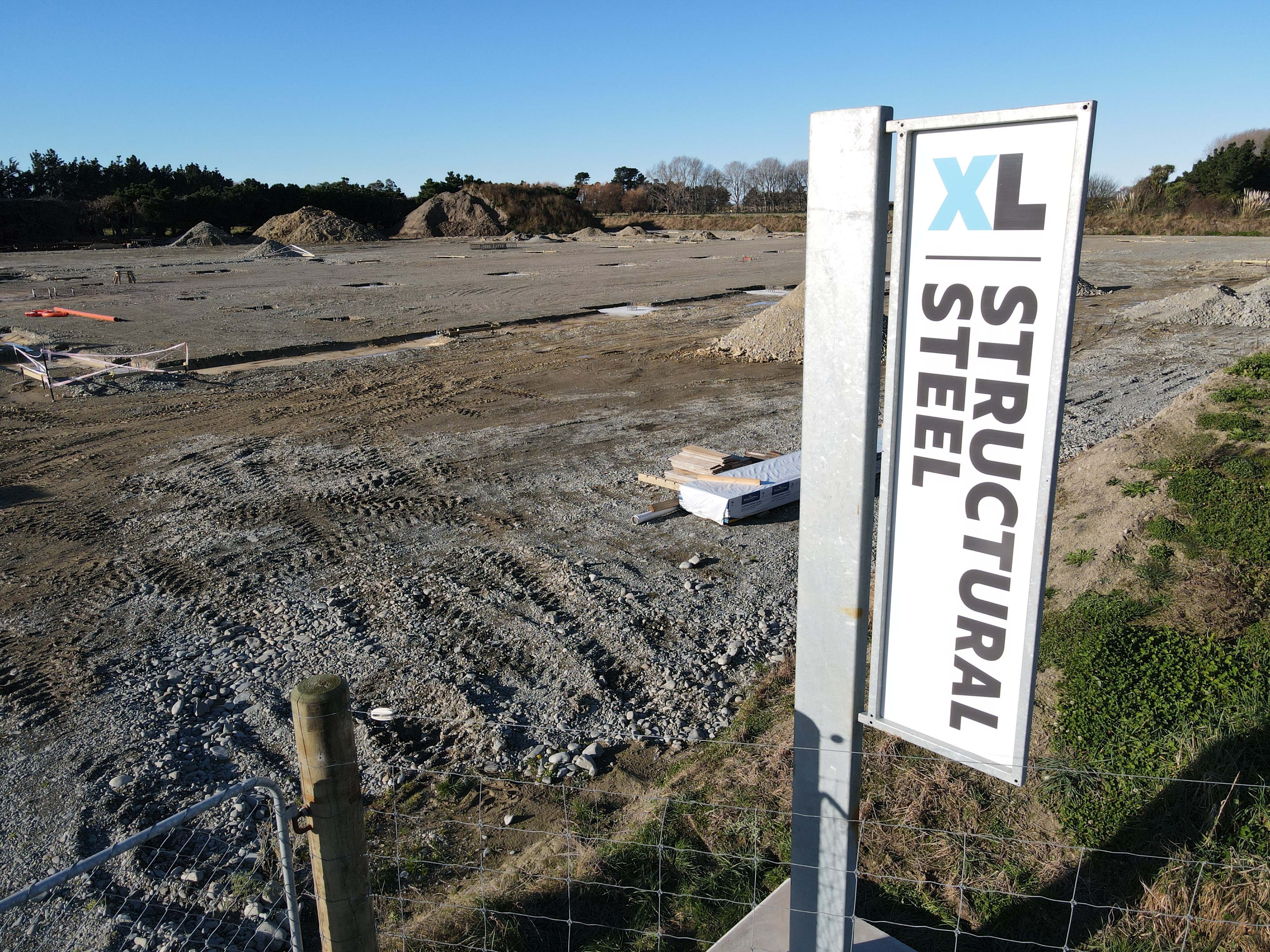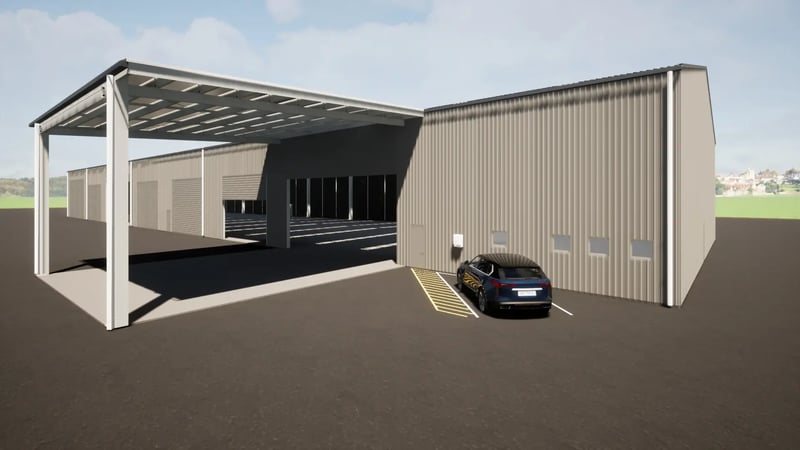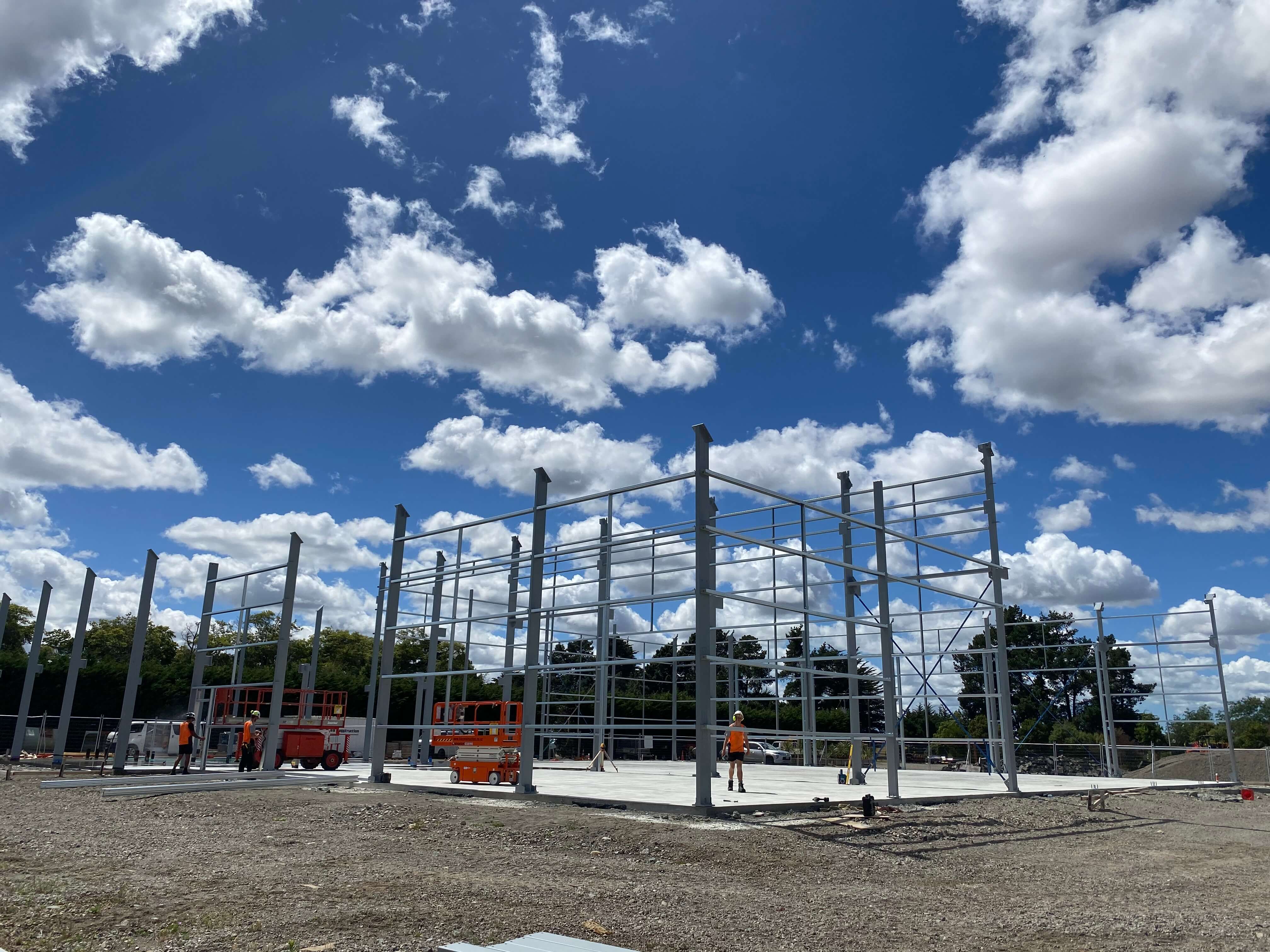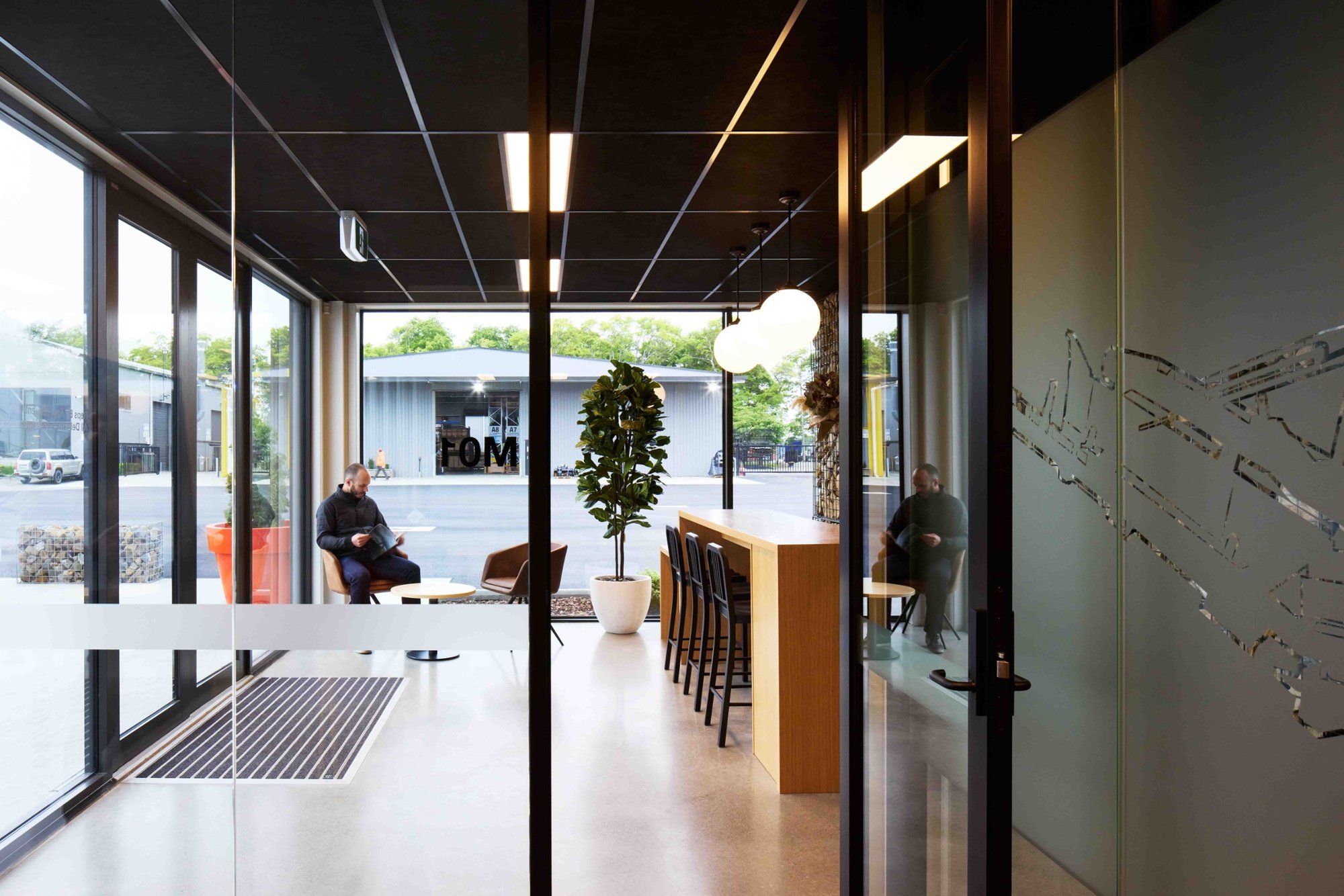The building process for a commercial building explained

Are you looking to build a purpose-built commercial building but not sure where to start?
It can often seem overwhelming for business owners or new developers when looking to start the journey of building a new commercial or industrial building.
In this article, we will take you through the commercial building construction process, so you are aware of all that it entails.
Business planning/Development planning
The first stage in commercial building construction is the business planning and development phase. As a business owner/developer, you need to start the journey by being clear about:
- The outcomes you are aiming to achieve from building new premises,
- The problems you are looking to solve,
- The gains you are trying to achieve.
We recommend you work with your management team or key stakeholders to agree on the outcomes and set the requirements for building at the outset.
Selecting a location
Selecting a site location for your new premises is an important decision to make. While it may be a simple process in some instances, in other instances it can require a reasonable amount of due diligence to ensure you find the right site.
You need to consider several factors when selecting a site location. These include:
- Will this site maximise the future capital gain/return on investment?
- Is the site likely to benefit from future growth, capital investment, or regional development initiatives?
- Is the site likely to benefit from future growth, capital investment, or regional development initiatives?
- What restrictions could this land have now or in the future?
- Is the land in the correct council planning zone for the intended building or activity?
- Are there restrictive covenants or noise limits in place?
- How will this site impact the cost of construction?
- Could the shape of the site, topography, or ground conditions affect the cost of construction?
Setting a preliminary budget/Capex approval
There are numerous costs to consider when constructing new commercial premises, from acquiring the land, development costs such as getting utilities connected, hiring consultants and architectural designers, obtaining permits and local authority development levies, purchasing the building materials, building contractor costs, as well as fit-out and completion expenses.
A budget should be set in order to outline how much there is to work with, and equally importantly, how the project will be funded and whether finance or investors will be required.
As a starting point, you can read our cost per square metre guide for commercial buildings, however, it would be recommended to contact the team at XL to discuss this in further detail. In some instances, it is useful to get a preliminary building concept completed to ascertain the budget and/or likely costs more accurately.
Conceptual design phase

The next step once your location is chosen, your key project goals/objectives are set, and a preliminary budget is established, is to systematically work through the conceptual design phase.
The key steps for this phase are to complete a conceptual building design and establish with reasonable accuracy the total cost of the project.
To streamline this process of designing a building that fits within your budget it is helpful to work with an architectural designer who has:
- A comprehensive understanding of the cost of building,
- A building contractor they can work with (this can be your preferred builder) to confirm cost drivers and preferred contractor construction methods,
- A company that specialises in and offers a design-build commercial construction service or,
- It could be a company like XL Structural Steel that has all three offerings available.
It is important for you (the owner/developer) to meet with the architectural designer/consultant to articulate your vision for the project, key purposes and uses for the building, and give a brief of the key outcomes you are looking to achieve.
Here at XL, we call this the “project discovery meeting” - we find it helpful to have this meeting early on in the process to gain a more in-depth understanding of your project. You can click here to book a project discovery meeting with one of the XL building consultants.
Once the general size and functions of building areas have been decided you will need to consider the building’s orientation on the site. To assist with this, we would recommend your building designer completes a planning check of your property. This would include checking the property titles, land covenants, consent notices, easements, zone rules, and utility connections - to name a few.
From this, a preliminary building concept can be drafted along with bulk and location plans for your initial approval.
A resource consent or land use consent is required if the local authority planning rules or covenants state that any of the proposed building work or proposed activity is discretionary or not permitted. Examples would include:
- Building activity
- Earthworks
- Coastal zones/Flood zones
- Building envelope breaches
It is important to get the resource consent approved early if this is required for your site as this may add extra building conditions, change the building design requirements, and add cost to the project.
Budget check
Once a preliminary building concept has been provided it is recommended to complete a budget check and get finance pre-approval if required.
It is recommended that the conceptual plans be issued to building contractors to put forward a proposal. This will help ascertain with reasonable accuracy the price for the building and timeframe for completion (note there is likely to still be a number of unknowns in the project as the developed design is not yet completed).
At this point, you should have enough certainty in the project to be able to move forward with the developed design in view of submitting plans to the council.
Whether you are working with an independent architectural designer or a design-build process, it would be usual that the provider will require some form of client approval at this stage to move forward into the developed design.
For a design and tender process, it may be in the form of a short-form agreement or memorandum of understanding for the developed design phase.
For a design-build process, they may require you to sign a full construction contract before proceeding.
Developed design phase
During the design phase the architectural designers, consultants, contractors, and professionals will produce a full set of drawings that include all the project’s specifications. When working with building specialists like XL Structural Steel they can be the central hub for collating the various reports, plans, and specifications.
The first step of the developed design phase is to engage the necessary consultants for your project. Examples of consultants reports required for a commercial or industrial building are:
- Fire report
- Geotech report
- Structural engineering producer statements
- Civil & stormwater design
- Interior design
- Accessibility design
You can view a more in-depth article about what consultants are required here.
Once the various consultant reports are collated these reports become the framework for the full set of consent drawings and final documentation for council consent submission.
Building consent
Once the developed design and building plans are completed these are submitted to your local council with supporting specifications and engineers' documentation. It is recommended that the architectural designer or design-build company submit the consent application to the council on your behalf. This will mean they will become the first point of contact for responding to any council RFI’s (requests for further information).
RFI’s from the council are common during the building consent process. It is the responsibility of the building consent applicant to respond to the questions before the council moves forward with the application.
In theory, the designer should get it right so there is no RFI’s but in practice, this isn’t the case. The number and type of RFI’s asked can even come down to who the consent processor is on the day… some are practical, and others have different interpretations of the building code.
Tender process
Often it is good to start the final tender process after the first round of RFI’s from the council. This can ensure there are not likely to be any significant changes to the project before the council issues the building consent. The building consent plans and specifications are issued for tender. This can be tendered in two ways:
-
To a head contractor/builder who is going to price out the full project as a lump-sum total price or as an open book method with a declared margin.
-
The design is tendered directly to sub-trade and the project is managed by the owner/developer.
Sometimes it is a combination of the above. For example, a head contractor will look after the build, and the office fit-out or the exterior works/landscaping is organised by the landowner/developer. You can read more about the pros and cons of different tender options here.
Construction phase
%20(1).png?width=800&name=XL%20%20Commercial%20building%20processes%20blog%20(2)%20(1).png)
Once your head contractor is secured and the building consent is approved, earthworks and prep work can get underway on-site and the construction phase can begin.
It is important to ensure procurement of materials for the project happens well in advance, especially in post-COVID times where supply chain challenges are common throughout the construction industry.
When using the XL Structural Steel building system, it would be common for XL Structural Steel to ring-fence the raw structural steel for your project ensuring the materials are available on time.
The construction process includes:
- Site preparation:
- Clear site, remove vegetation
- Create a level building platform
- Implement drainage
- Lay services
- Arrange power and water
- Arrange temporary site office, storage etc
- Foundations
- Steel building kitset supply
- Construct building “superstructure”, rig steel, and complete exterior framing
- Roofing and wall cladding
- Construction of offices and specialist claddings and facades
- Fitout of warehouse and offices
- Landscaping, yard, and carpark
Post-construction/Completion
Near the end of construction, the head contractor will conduct a final walk-through and create a snag-list. This step identifies any minor defects or unsatisfactory components so that final repairs can be made before the project wraps up, and the building is officially handed over.
Spotting and fixing these snag-list items such as Gib cracks, cracked tiles, or faulty paint finish may be harder to spot once the occupancy phase begins and furnishings and appliances are installed.
Once construction is complete the head contractor would often provide a practical completion certificate, and then a final inspection is completed by a council inspector, and a code of compliance is issued.
In conclusion
There will be many things to consider throughout the process of constructing a new commercial building or industrial factory. From the initial planning through to when the building is handed over to the owner. Each step is important and should be completed methodically without any shortcuts.
Also, all aspects of constructing a commercial building will involve many professionals, subcontractors, and suppliers. Effective communication is crucial and clear lines of communication should be set in place throughout each stage of the process.
Our clients have found the process is streamlined significantly when XL Structural Steel manages the whole design process, manages the consultants required, and is the key point of communication for our clients through the early phases of the building process.
If you are looking to build a new commercial building and want help starting the process, get in touch with our expert team today.



